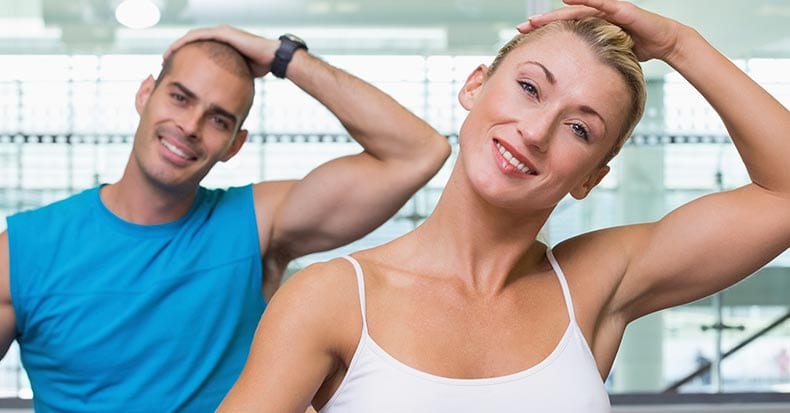As stated last month, exercises that focus on improving posture, flexibility, strength, and coordination are important for creating a well-rounded cervical rehabilitation program. Our discussion continues this month with stretching and strengthening exercises.
STRETCHING: Since our neck muscles have to hold up our 12 pound (~5.5 kg) head, it’s no wonder why our neck muscles seem to be tight almost all the time.
Here are two ways to stretch the neck:
- You can simply drop the chin to the chest, look at the ceiling, try to touch your ear to your shoulder (without shoulder shrugging) on both sides, and rotate the head left to right and vice versa (six directions).
- You can use gentle pressure with your hand and assist in the active stretch by gently pulling into the six directions described in #1 by applying “over-pressure” at the end-range of motion (staying within “reasonable pain boundaries”).
STRENGTHENING: Most people have a forward head carriage, meaning their head normally rests in front of their shoulders. The further forward the head sits, the greater the load on the muscles in the back of the neck and upper back to hold it up. This position promotes a negative spiral or “vicious cycle” that can lead to many complaints including (but not limited to) neck pain, headaches, balance disturbances, and in the long-term, osteoarthritis.
There are two important groups of muscles that require strengthening: the deep neck flexors and deep neck extensors.
- The deep neck flexors are muscles located directly on the front of the cervical spine and are described as being “involuntary” or unable to be voluntarily contracted. Hence, we have to “trick” the voluntary outer “extrinsic” (stronger) muscles into NOT WORKING so the deep, intrinsic ones will contract. You can do this by flexing your chin to the chest and pushing your neck (not head) back over your shoulders into resistance caused a towel wrapped around the back of the neck. If you feel your chin raise towards the ceiling, you’re doing it WRONG! Keep the chin tucked as close to the chest as possible as you push your neck (not your head) backwards. If you’re doing it correctly, your chest should raise towards the ceiling as you push your chin down and neck back. Try it!
- The deep neck extensors are strengthened in a very similar way EXCEPT here you DO push the back of HEAD back into your towel while keeping your chin tucked tightly into your chest. Do three reps, holding each for three to five seconds and switch between the two for two to three sets.
We will finish this discussion next month with important coordination exercises!
